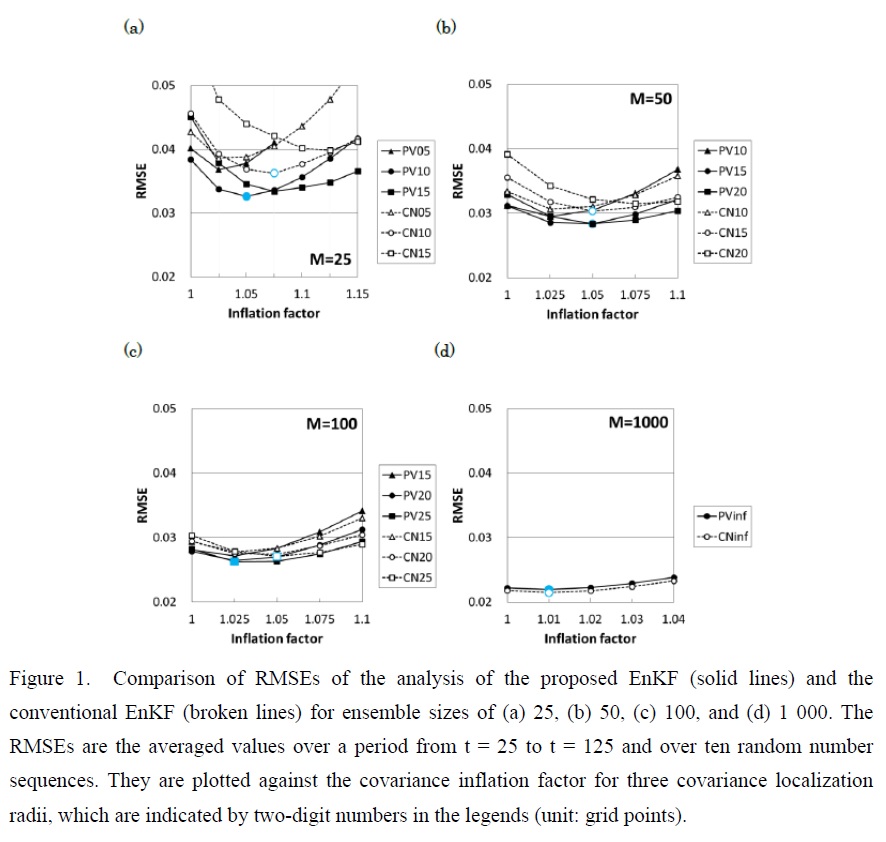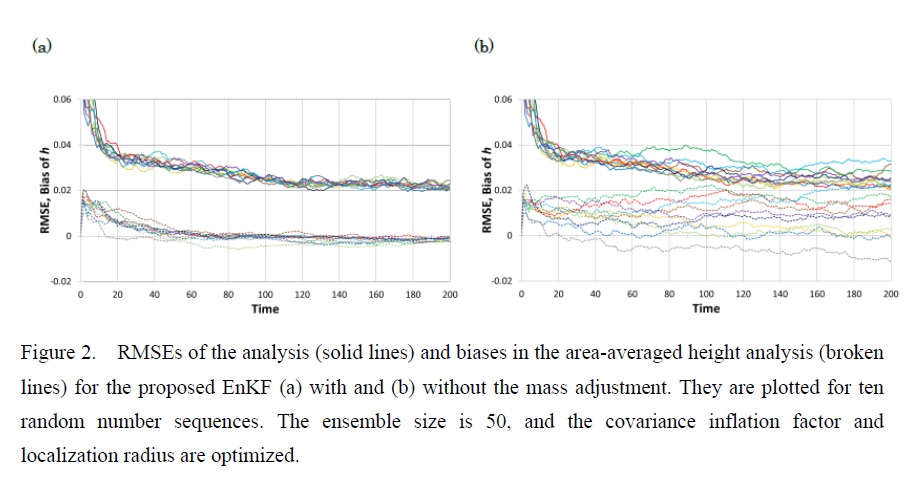JMSJ Highlights
Tsuyuki (2019)
Tsuyuki, T., 2019: Ensemble Kalman filtering based on potential vorticity for atmospheric multi-scale data assimilation. J. Meteor. Soc. Japan, 97, 1191-1210.
https://doi.org/10.2151/jmsj.2019-067
Graphical Abstract with highlights
Overview:
A multi-scale data assimilation method for the ensemble Kalman filter (EnKF) is proposed for atmospheric models in cases with insufficient observations of fast variables, and its performance is demonstrated by data assimilation experiments with a shallow-water model. In this method, the dynamical state variables in the free atmosphere are decomposed into balanced and unbalanced parts by applying potential vorticity (PV) inversion to the large-scale PV anomaly, and the forecast error covariances between the two parts are ignored in computing the Kalman gain. It suppresses spurious error correlations that arise from sampled ensemble covariances and makes it possible to appropriately address the balance issue of covariance localization.

The data assimilation experiments using the stochastic EnKF with the same localization radii for the two parts reveal that the proposed EnKF is superior in the accuracy of the analysis to the conventional EnKF unless the ensemble size is sufficiently large (Figure 1). The assimilated observational data are velocity components. The computational cost of the proposed EnKF is only about 10% more than that of the conventional EnKF, so that the proposed EnKF improves the analysis much more efficiently than increasing the ensemble size. A special device of the proposed EnKF is the introduction of mass adjustment to suppress additional sampling errors caused by the decomposition of state variables. The mass adjustment effectively eliminates large biases in the height analysis and increases the accuracy of the analysis (Figure 2).

In implementing the proposed EnKF to a three-dimensional high-resolution model, the decomposition of state variables is conducted to the dynamical state variables in the free atmosphere, and the state variables in the planetary boundary layer and those of water substance are handled in the same way as in the conventional EnKF. Since the large-scale PV anomaly needs to be inverted, the computational cost of PV inversion can be reduced by using a low-resolution hydrostatic model. It is left for future research to clarify the benefits of multi-scale covariance localization of the proposed EnKF.






